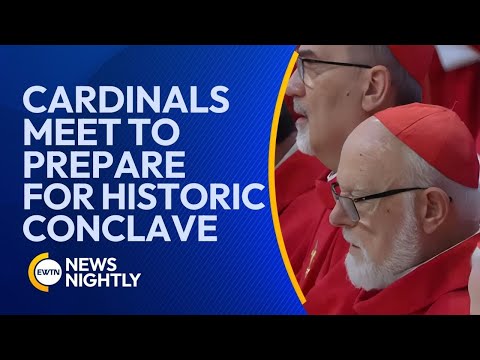CUM CLAVIS 2 MAY 2025 – THE PERIOD BEFORE THE PAPAL CONCLAVE

Introduction
The death of a pope is not only a time of mourning, but also of sacred preparation. Before the mysterious doors of the Sistine Chapel close for the Conclave, a precise and ritual-filled process begins, leading to the election of a new pope. This transitional period is less well known, but of cardinal importance. In this article, I will explore what happens before the conclave: the structures, the responsibilities, the preparations, and the inner atmosphere that guides the College of Cardinals toward one of the most significant decisions in the Catholic Church.
The Protagonists
A small group of key figures lead the preparations:
• The Cardinal Dean, who presides over the meetings.
• The Cardinal Camerlengo, who governs the Vatican during the vacancy.
• The Major Penitentiary, Vicar of Rome, and other senior church leaders.
• The Master of Papal Liturgical Ceremonies, who oversees the liturgies.
• And administrators such as the Secretary of the College of Cardinals.
These servants of the Church ensure that everything proceeds in order—from the solemn funeral to the logistics of the conclave itself.
Fifteen Days of Mourning and Preparation
After the pope’s death, a nine-day period of liturgical mourning begins, known as the novendiali. These solemn days include public masses and rites in honor of the deceased pontiff. Meanwhile, the pope’s body is transferred to St. Peter’s Basilica for public veneration. The funeral typically takes place between the fourth and sixth day.
Parallel to the mourning rites, the cardinals begin preparations for the conclave. Church law allows up to 20 days to pass between the pope’s death and the beginning of the voting process. This ensures time for all eligible cardinals to arrive in Rome. The Camerlengo is assisted by three cardinal aides (one from each order), who rotate every three days to handle administrative matters. This preparatory work ensures that every detail—from accommodation to liturgy—is ready for the conclave.
The First General Congregation
The first general congregation of cardinals takes place before the conclave begins. Here, even non-elector cardinals may gather. These meetings serve as an open forum where ideas are shared and opinions exchanged. Important decisions—such as the starting date of the conclave—are made here.
Each cardinal receives a copy of Universi Dominici Gregis, the constitutional guidelines for the conclave. In a solemn moment, they all take an oath to respect the process and maintain strict secrecy. The oath is taken individually, with the hand placed on the Gospel, and includes a pledge not to disclose any information about the election—not even through technology. This first congregation sets the tone for the entire election: reverence, silence, and responsibility.
The Serving of the Word
During this time of preparation, spiritual guidance is central. Two chosen preachers address the cardinals about their spiritual task—the discernment of a new shepherd for the world Church. The first homily takes place during the pope’s funeral; the second occurs just before the cardinals withdraw into the conclave.
These meditations are not political speeches, but spiritual calls to humility and wisdom. The preachers remind the cardinal electors that their duty is not only to choose a competent leader, but a true servant of Christ—someone who can bear the weight of the modern world without losing the eternal truth of the Gospel.
The serving of the Word is a key moment—it places the entire process under the light of divine guidance, and not merely human judgment.
Summary
Before the doors of the conclave close, there is a time of preparation that is just as important as the election itself. These days of mourning, prayer, logistics, and dialogue form the foundation on which the new pope will be chosen.
The Church does not enter the mystery of leadership by chance—it does so with order, humility, and sacred seriousness. The process is a blend of ancient tradition and modern planning—and proves that faith is not chaotic, but disciplined, focused, and obedient to God.
As the world awaits the white smoke, the Church moves through a time of silence, surrender, and discernment. This time reminds us: the true power does not lie in who is elected, but in the way that choice is prepared. Habemus Papam does not begin with smoke—it begins with reverent preparation, behind closed doors, cum clave.